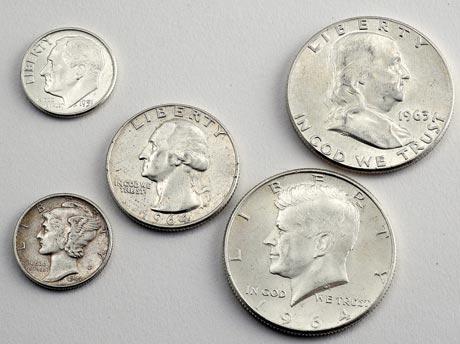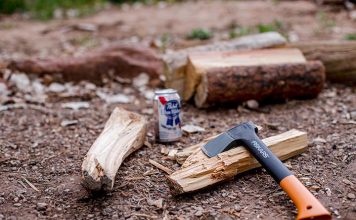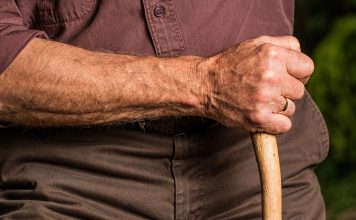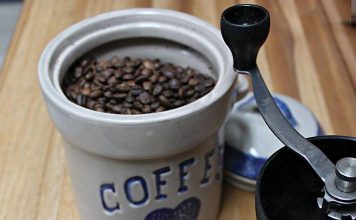| Issue #126 • November/December, 2010 |
The standard measure of weight used for precious metals is the troy ounce. A troy ounce (31.1 grams) is just a bit heavier than a standard ounce (28.4 grams). In general, if a dealer says “ounce” he is referring to a troy ounce unless he specifies otherwise. Bullion is usually sold in one troy ounce weights, and also five and ten troy ounce weights. Sometimes it can be found in fractions of an ounce or grams. This is especially true for small gold coins and bars.
Pricing precious metals
The price of precious metals fluctuates constantly on the open market. We are interested in what is called “spot price.” That is the current price for precious metals. You can find this on different web sites. I like the Southern Coins and Precious Metals site (www.southerncurrency.com). If you click on “Live Spot Pricing” you will get an up-to-date spot price on the monetary metals. Dealers will charge you a premium over spot price. You want to find the dealer in your area or online that charges the lowest premium over spot price.
Coins are issued by governments and have a monetary value stamped on them. For example, the old Morgan and Peace dollars and 90% silver coins in the photos were made by the U.S. Government to be spent as money. Bullion is stamped with a weight and has no monetary value stamped on it. In recent years many governments have minted and sold bullion coins. Look at the Silver American Eagle in the photo on the next page. It has a value of one dollar because by law all American coins have to have a monetary value on them. It also has an ounce of silver in it. So the marketplace has coins, bullion, and bullion coins.
Silver bullion is generally sold by the ounce. Look at the photos and you can see different weights and shapes of silver bullion.
Silver coins are readily available in the marketplace. The photo at right shows a variety of old U.S. coins. These coins are not pure silver. They are made of an alloy of 90% silver and 10% copper. Thus, they are called 90% coins. They are also known as “junk silver.” Old U.S. coins are not sold by the ounce, but by “face value.” There is a dollar’s face value in ten dimes, four quarters, or two half dollars. If you asked your dealer for five dollar’s face value of 90% he would give you fifty dimes, twenty quarters, ten half dollars, or an equivalent mix. Many people that buy bullion favor junk silver because they believe that the smaller amounts of silver in them will be handy in a barter economy.
The old silver dollars are usually not a good buy. Many people collect old Morgan and Peace dollars. If they cannot afford nicer coins, they will collect coins that have more wear on them. Old dollars have a numismatic (collecting) premium on them that is far more than the other 90% coins.
I do not want to get bogged down in math, but the weights of 90% silver coins may interest you. A dollar’s face value of 90% weighs (for our purposes) .715 ounce. An old dollar weighs .77 ounce. If you multiply the weight by the spot silver price you will get the current value of the silver before the dealer premium is added.
Like silver bullion, gold bullion is sold by the troy ounce. There are Gold American Eagle coins, too. Unlike silver, gold is readily sold in fractions of an ounce and by grams. Gold American Eagle coins come in 1/10, ¼, ½, and 1-ounce weights. If you look at the first photo above, you will see a ¼-ounce Gold American Eagle (top center) and a 1/10-ounce Gold American Eagle (top left). You will also see a 1-gram (bottom left) and a 5-gram (bottom right) bar. Notice the foreign coins. When you find a dealer that you trust, foreign bullion coins can be a good addition to your stash. There are many different coins, bars, and rounds available in different sizes.
|
Buying from a dealer
A dealer will charge you a premium over spot. This is his mark-up, and he needs it to stay in business. Your task is to find the dealer that will give you the lowest price.
First you need to decide what kind of bullion you want to start with. Let’s say that you want silver ounces. Call the shops in your area and ask the dealers what they are charging per ounce. They may ask how much you want. That is a legitimate question, as they may give a discount for large orders, say 100 ounces or more. Write the prices down and go visit the lowest priced dealers. You need to do this when you have time to go shopping. Since spot price fluctuates continually, you have to go to the dealer right away to get the quoted price.
When you get to the shop tell the dealer that you just called and that you are there to buy. Do not judge a coin shop by its appearance. Some are modern and well lit. Others are more or less shabby. Better décor may mean higher prices for you. If the dealer is a good person to do business with, buy from him. Coin dealers are like other business people. Some value their customers and others don’t. Choose a dealer that gives you the best combination of service and price.
Once you know what bullion looks like and how it is priced, it really is that easy. You decide what you want to buy, you find the dealer with the best price and service, and you do business with him. The same goes for online dealers. Consider shipping and insurance in your price, too, when buying online.
|
Buyer beware
Keep this simple at first and stick to one kind of bullion. Once you get the feel for buying from a dealer that you trust, you can move on to other types of bullion. Most dealers will take care of their repeat customers.
It is okay for a dealer to recommend a different kind of bullion if he is out of what you want. For example, say that you generally buy silver ounces. If your dealer is out of one-ounce silver bullion he may say, “I have a lot of 90% that just came in.” That’s fine. You asked for bullion and he is just trying to fill your need.
It is not okay for a dealer to try to steer you toward collectible coins if you are asking for bullion. This is a tactic used by some telephone and online sales people. They will tell you that there is more potential for growth in collectible (also called numismatic) coins. They may also tell you that if the government ever decides to confiscate gold, your collectible coins will be exempt from the order. These sales people are working on commission and they are trying to make a killing off of you. I was at my dealer’s one day and a young man came in with coins that he had bought from an online seller. He paid twice as much as he should have because he fell for the collectible coin sales pitch. If any dealer tries to steer you away from bullion and toward collectibles, hang up or leave his shop. Collecting coins is a whole different discipline than buying bullion. You need a lot more (and different) knowledge to buy numismatic coins.
I once knew a dealer that would tell people that if they left their coins with him he would guarantee them a 10% return over a year’s time. That dealer was in financial trouble and was reselling the coins. You want to have your bullion in hand when you leave the coin shop. The same goes for online dealers. Some do have legitimate storage facilities, but you want your bullion in your possession. Recently, two major dealers were audited, one by a bank and the other by government regulators. In both cases, people’s bullion was seized as evidence until a court order was signed to release it. During that time, if any of those people needed their bullion, they were out of luck.
|
How much should you buy?
Many people will now be asking, “How much silver and/or gold do I need?” Only you can answer that question. But there are some guidelines that I recommend. If you do not have your financial house in order, precious metals are not for you. If you are deep in debt and live paycheck to paycheck, you should not be buying silver or gold. Before you buy precious metals, you should have three months of living expenses in the bank (more is better) and your debt should be manageable. You should have your food storage and other preparations well along the way before you buy silver or gold. Financial planners have recommended that people have 5% of their portfolio in gold. In light of new economic realities you may want to have as much as 10% in precious metal, but again that is contingent upon having all of your other ducks in a row. I think that the best way to buy bullion is to buy a set amount every payday.
There has been a renewed interest in silver and gold because of the recent economic crisis and the reaction of many governments, which was to print a lot more paper money. Most people that have bullion do not consider it an investment. They consider it “economic insurance.” Bullion does not generate interest or dividends. It can go up or down in value very quickly and stay up or down for a long period of time. Do not own more bullion than you can afford to keep on the sideline for an extended period of time.
|
Protecting your investment
Besides the dollar amount that you have in precious metals, you have to think of the weight of the bullion and the space that it takes up. If you are in an area prone to evacuations (think hurricane country) you do not want a lot of weight and bulk in precious metals. You do not want to move and protect a lot of bullion in such an emergency. Go lighter on silver and heavier on gold if you live in such an area. Keep in mind that the smaller your stash, the easier it is to hide it, too.
Do not talk to others about your stash. You do not want friends to talk to others about your bullion, so keep it to yourself. Storage can be tricky. You want to keep your bullion hidden from burglars. I have no recommendations for you, as all households have different hiding spots. Also, understand that bullion, unlike collectible coins, is not generally covered under a homeowner’s insurance policy. So be clever in your storage. Having more than one hiding place is a good idea.
I would not use a bank safe deposit box to store bullion. If there is a bank holiday, that may be when you will want your gold. If you cannot get into the bank, you cannot get your gold.
Disclaimer: I am not a financial planner. The prices of precious metals can go down and stay down for long periods of time. You can lose money selling precious metals in a down market. Buying precious metals is not recommended for everyone. Do your own due diligence and consult a financial planner before investing in precious metals.



















Excellently written article in easy to understand format.
PM’s are not an investment but a good financial insurance policy.
Gold and silver have been used for thousands of years as barter and will probably go on as such for many years to come.